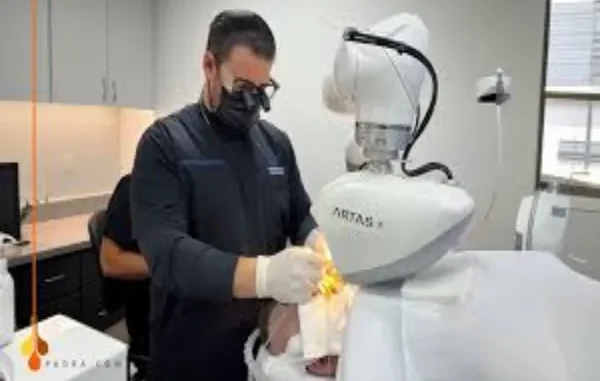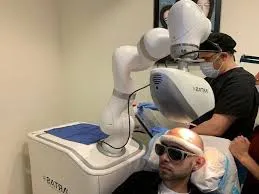
Hair restoration has entered an era where scalp rejuvenation isn’t just a surgical procedure, it’s a technological ecosystem. The modern hair transplant clinic is no longer limited to surgical precision; it’s a hybrid space where robotics, artificial intelligence, and digital health systems intersect to create safer, smarter, and more predictable outcomes. Clinics offering the Best Hair Transplant are evolving beyond aesthetics to embrace biotechnology and data security as foundational pillars of patient care.
What was once a manual art extracting follicles one by one is now a digitally choreographed process, guided by machine learning, image recognition, and real-time data feedback. Yet this digital transformation brings a new challenge: how to ensure that sensitive patient data, medical imaging, and biometric mapping remain protected in increasingly connected systems.The future of hair transplant technology lies not just in perfecting graft survival but in securing every pixel, process, and patient file that defines the journey to transformation.
From Surgery to Systems: The Rise of Smart Hair Restoration

The evolution of hair transplants mirrors the trajectory of advanced surgery. Early techniques like FUT (Follicular Unit Transplantation) were groundbreaking for their time but entirely manual. Then came FUE (Follicular Unit Extraction), which made the procedure minimally invasive, reducing recovery time. Now, the industry stands on the brink of smart transplantation, where robotics, augmented imaging, and AI-driven analysis combine to enhance precision and reproducibility.
Modern robotic systems such as ARTAS or NeoGraft use machine vision to identify and extract follicles with unprecedented accuracy. These systems minimize human fatigue and eliminate guesswork in graft placement. The surgeon remains in control but the machine acts as a precision partner, ensuring uniform density and natural directionality.
This digital integration has also made the procedure more data-dependent. Each patient’s scalp scan, follicular mapping, and growth modeling are stored and analyzed electronically, forming a long-term medical record. Hence, protecting this sensitive data ranging from high-resolution scalp images to genetic hair-loss profiles has become an ethical necessity.
The Hidden Algorithm: Artificial Intelligence and Predictive Follicular Modeling
AI is changing how surgeons plan and execute transplants. By analyzing large datasets of patient outcomes, AI models can now predict graft survival rates, identify optimal donor regions, and even simulate post-surgery hair growth patterns before a single incision is made.
This predictive intelligence relies on vast databases of scalp images, genetic markers, and environmental factors. However, the more interconnected these systems become, the more vulnerable they are to data breaches or corruption. If tampered data guides graft placement or density modeling, the consequences extend beyond privacy, they impact clinical results.
To mitigate this, hair restoration centers are now integrating secure data frameworks similar to those used in advanced hospitals and pharmaceutical labs. These systems employ encryption, biometric access, and blockchain-based storage to ensure that patient information and surgical parameters remain unaltered throughout the process.
Cybersecurity and the New Hippocratic Oath
In healthcare, “do no harm” now extends to digital harm. For surgeons, protecting patient data has become an ethical extension of medical responsibility. In the field of hair transplantation, where procedures often involve high-definition imaging, AI-assisted diagnostics, and long-term cloud-stored progress tracking, cybersecurity isn’t optional, it’s integral.
Sophisticated imaging tools record follicular distribution, vascular structure, and scalp elasticity, all of which are digitally archived. These images, when combined with AI datasets, form a digital twin of the patient, a model used to design, simulate, and refine the procedure. If this model is exposed or manipulated, both trust and clinical outcomes are compromised.
Leading clinics now use secure server environments and redundant backups to ensure that patient data remains immune to tampering. The integration of zero-trust architecture, where every system, device, and user must verify before accessing sensitive data is slowly becoming standard in high-end aesthetic and surgical facilities. These steps, inspired by the kind of risk reduction frameworks described in this article on secure systems in healthcare environments, mark a new era of “digital ethics” in cosmetic medicine.
Robotic Autonomy and Machine-to-Patient Interaction
Hair transplant robots are no longer passive tools, they are semi-autonomous surgical systems capable of learning from each procedure. Using real-time feedback, they can adjust extraction depth, speed, and angle to match tissue density. The result is a consistency that even the most experienced human surgeon cannot replicate unaided.
However, with autonomy comes risk. Machine-assisted systems depend on networked software that must be continually updated to prevent vulnerabilities. A corrupted firmware update or unprotected network could lead to performance errors during surgery. Hence, secure connectivity is as vital as surgical sterility.
In response, many advanced clinics are adopting closed-loop AI systems machines that process and store data internally rather than relying on external cloud servers during procedures. This reduces exposure to network threats while preserving computational speed. Some centers are even collaborating with cybersecurity firms to design bespoke firewalls for surgical robotics. The ultimate goal: a cyber-secure operating room where digital interference is as rigorously controlled as bacterial contamination.
Genomics and the Data of Identity
The next wave of hair restoration won’t rely solely on physical transplants, it will leverage genetic editing and regenerative medicine. Scientists are studying how to reawaken dormant follicles through gene therapy and how to clone hair follicles from stem cells. These breakthroughs depend on sequencing and analyzing the patient’s genetic blueprint.
Yet, genomic data is among the most sensitive personal information a clinic can store. Unlike a password, it cannot be changed if compromised. Protecting such data requires pharma-grade security protocols, multi-layered encryption, and ethical oversight.
Some of the most technologically advanced centers are now using blockchain-based ledgers to record genetic data transactions. Each interaction analysis, consultation, or research creates an immutable record, guaranteeing traceability and patient consent. In essence, these clinics are adopting data governance frameworks similar to those in biopharmaceutical research, ensuring that the science of restoration never compromises the sanctity of identity.
Cryostorage, Connectivity, and the Digital Chain of Custody
Cryopreservation has entered the hair restoration arena as well, where extracted grafts, stem cells, or regenerative serums are stored for future use. These biological materials are kept in cryogenic chambers monitored by IoT sensors that send real-time temperature and pressure data to control systems.
A single glitch, whether mechanical or digital, could destroy years of stored material. Thus, the “cold chain” in hair restoration must be as secure as in vaccine logistics. Multi-tiered backup systems, encrypted telemetry, and tamper-detection alerts are becoming essential to maintain the digital chain of custody for every biological asset.
This convergence of digital reliability and biological preservation represents a paradigm shift, where IT security becomes the unsung guardian of physical regeneration.
The Human Factor in a Digital Clinic
Even in an age of algorithms and automation, human expertise remains irreplaceable. Surgeons interpret data, calibrate machines, and make micro-decisions that no system can replicate intuitively. The integration of technology doesn’t diminish human artistry, it amplifies it.
Yet, for that collaboration to thrive, digital literacy among medical teams must match their surgical skill. Regular cybersecurity training, encrypted communication channels, and disciplined data management are now as critical to patient care as post-operative antibiotics. Clinics that combine medical excellence with digital responsibility are redefining what it means to be world-class.
Conclusion
Hair transplantation is no longer confined to grafts, scalpels, and microscopes, it’s evolving into a symphony of data, robotics, and regenerative biology. Each follicle implanted is guided by algorithms, stored in secure networks, and analyzed through digital precision.
But with this progress comes a dual responsibility: to safeguard not only the patient’s appearance but also their data, dignity, and trust. The same secure systems that protect hospitals from digital risk now underpin the ethics and effectiveness of aesthetic medicine.
In the future, the most advanced clinics won’t just offer the latest robotic extraction tools, they’ll guarantee the integrity of every byte and every cell involved in the process. To see how secure systems are revolutionizing the safety of healthcare environments, explore this detailed article on data protection and risk reduction.
Because in the new age of hair restoration, innovation doesn’t just grow hair, it safeguards humanity, one follicle and one dataset at a time.






Leave a Reply